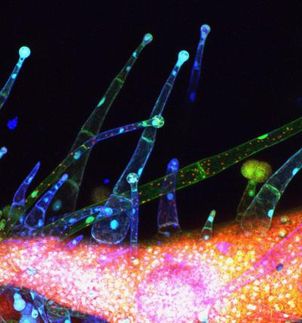The Pink Gene
Advertisement
What makes a particular variety of tomato pink? The gene responsible, discovered recently at the Weizmann Institute, may help researchers develop new exotic tomatoes. Far Eastern diners are partial to a variety of sweet, pink-skinned tomato. Dr. Asaph Aharoni of the Weizmann Institute's Plant Sciences Department has now revealed the gene that's responsible for producing these pink tomatoes. Aharoni's research focuses on plants' thin, protective outer layers, called cuticles, which are mainly composed of fatty, wax-like substances. In the familiar red tomato, this layer also contains large amounts of antioxidants called flavonoids that are the tomatoes' first line of defense. Some of these flavonoids also give the tomato cuticles a bright yellow cast - the color component that is missing in the translucent pink skins of the mutants.
Aharoni and his team are able to rapidly and efficiently identify hundreds of active plant substances called metabolites. A multidisciplinary approach developed over the past decade, known as metabolomics, enables them to create a comprehensive profile of all these substances in mutant plants and compare it with that of normal ones.
The research, carried out in Aharoni's lab by Dr. Avital Adato, Dr. Ilana Rogachev and research student Tali Mendel, showed that the differences between pink and red tomatoes go much deeper than skin color: The scientists identified about 400 genes whose activity levels are quite a bit higher or lower in the mutant tomatoes. The largest changes, appearing in both the plant cuticle and the fruit covering, were in the production of substances in the flavonoid family. The pink tomato also has less lycopene, a red pigment known to be a strong antioxidant that's been shown to be associated with reduced risk of cancer, heart disease and diabetes. In addition, alterations in the fatty composition of the pink tomato's outer layer caused its cuticle to be both thinner and less flexible that a regular tomato skin.
The researchers found that all of these changes can be traced to a mutation on a single gene known as SIMYB12. This gene acts as a 'master switch' that regulates the activities of a whole network of other genes, controlling the amounts of yellow pigments as well as a host of other substances in the tomato. Aharoni: "Since identifying the gene, we found we could use it as a marker to predict the future color of the fruit in the very early stages of development, even before the plant has flowered. This ability could accelerate efforts to develop new, exotic tomato varieties, a process that can generally take over 10 years.'"






















































